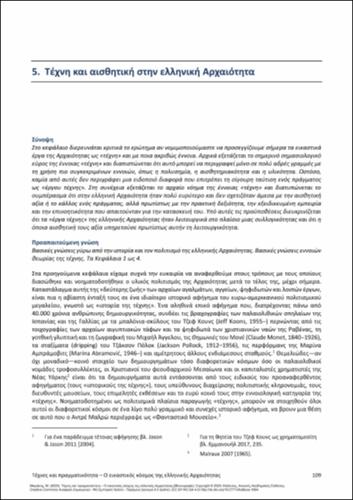| Title Details: | |
|
Art and aesthetics in Greek antiquity |
|
| Authors: |
Mikrakis, Manolis |
| Description: | |
| Abstract: |
Chapter 5 critically investigates the question of whether we are justified in approaching the visual works of antiquity as “art” today, and in what precise sense. The chapter begins by examining the contemporary semantic range of the term “art,” concluding that it can only be outlined in very broad terms through more specific concepts such as polysemy, sensoriality, and materiality. However, none of these provides a definitive criterion that would allow for the unambiguous identification of an object as a “work of art.” The chapter then turns to the ancient meaning of the term technē, concluding that in Greek antiquity it had a much broader meaning, not directly associated with the aesthetic value or beauty of an object, but primarily with the practical skill, specialized knowledge, and inventive capability required for making it. Under these conditions, the chapter explains that ancient Greek “artworks” were functional within a collective context, and that any aesthetic value they possessed primarily served this functionality.
|
| Linguistic Editors: |
Kalliaras, Dimitrios |
| Graphic Editors: |
Kentrotis, Christos |
| Type: |
Chapter |
| Creation Date: | 11-07-2025 |
| Item Details: | |
| License: |
Attribution - NonCommercial - ShareAlike 4.0 International (CC BY-NC-SA 4.0) |
| Handle | http://hdl.handle.net/11419/14983 |
| Bibliographic Reference: | Mikrakis, M. (2025). Art and aesthetics in Greek antiquity [Chapter]. In Mikrakis, M. 2025. Arts and reality – The visual world of Greek Antiquity [Monograph]. Kallipos, Open Academic Editions. https://hdl.handle.net/11419/14983 |
| Language: |
Greek |
| Is Part of: |
Arts and reality – The visual world of Greek Antiquity |
| Publication Origin: |
Kallipos, Open Academic Editions |

